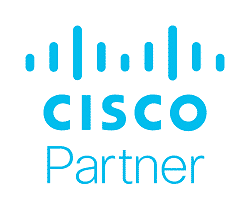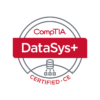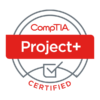Ask for more dates, different delivery languages or different mode as needed and we will try to satisfy your needs.
| Language | Mode | Start Date |
|---|---|---|
| Italian | Virtual Class | 09.09.2024 |
| Italian | Virtual Class | 27.01.2025 |
| English | Virtus Class or Classroom | On request |
| German | Virtual Class or Classroom | On request |
| French | Virtual Class or Classroom | On request |
What you’ll learn
The Cisco Networking Essentials course is designed to prepare you for Cisco Certified Support Technician (CCST Networking) exam. This course covers the basics of networking, including how networks function, the role of network devices, and the use of various applications and protocols. Students will learn about assigning IP addresses manually and automatically, as well as how these addresses are calculated and assigned. The course explores how different layers of networking (physical, data link, and network) work together to establish connectivity.
Additionally, students atteding Cisco CCST Networking course will gain skills in basic network diagnostics and troubleshooting, both locally and remotely. The course also delves into the fundamentals of security, covering threats and attacks across different platforms such as applications, cyber, wireless, and mobile devices. Students will also learn about configuring secure wireless networks.
To facilitate learning, the course is broken down into 39 modules, each focusing on specific topics. These modules emphasize critical thinking, collaboration, and practical application of skills. Various activities such as Check Your Understanding quizzes, labs, and simulations are included to assess student comprehension and provide immediate feedback.
The language used throughout the course is geared towards high school-level learners, ensuring concepts are easily understood. Multimedia tools like videos and quizzes cater to different learning styles, while hands-on activities help students develop problem-solving skills.
In summary, CCST Networking course provides a comprehensive overview of networking fundamentals, practical skills, and security principles, making it suitable for students looking to enter the field of networking.
What to expect in the exam
Below are some details about the Cisco Certified Support Technician (CCST Networking) exam:
- Languages: English, Arabic, Spanish, French, Japanese, Portuguese
- Duration: 50 minutes
- Number of Questions: 40
- Types of Questions: Multiple Choice, Drag & Drop
- Click here for the Exam Topics
Who should enroll
High school, secondary and 2-year college vocational students, IT and non-IT fields university students, career changers.
CCST Networking Prerequisites
Cisco CCST Networking Certification, a basic understanding of how to use a computer and browse the internet.
CCST Networking Training overview
Objectives
- Cisco CCST Networking Exam contents
- Network Types, Components, and Connections:
- Configuring Mobile Devices for Wireless Access:
- Configuring Integrated Wireless Router and Wireless Client for Secure Internet Connection:
- Importance of Standards and Protocols in Network Communications:
- Common Network Media:
- Communication on Ethernet Networks:
- Features of an IP Address:
- IPv4 and IPv6 Addressing:
- Configuring a DHCP Server:
- Routers Connecting Networks:
- ARP (Address Resolution Protocol):
- Fully Connected LAN:
- Clients Accessing Internet Services:
- Application Layer Services
- Testing and Troubleshooting Network Connectivity:
- Hierarchical Network Design:
- Virtualization and Cloud Services:
- Decimal, Binary, and Hexadecimal Systems:
- Ethernet Operation in Switched Networks:
- Physical and Logical Network Communications:
- Subnetting and IPv6 Addressing:
- Neighbor Discovery (ND):
- Cisco Routers and Switches:
- Troubleshooting Network Connectivity Issues:
- Common Threats, Vulnerabilities, and Attacks:
- Secure User Access:
CCST Networking Course outline
Module 1. Communications in a Connected World
1.1 Network Types
1.2 Data Transmission
1.3 Bandwidth and Throughput
Module 2. Network Components, Types, and Connections
2.1 Clients and Servers
2.2 Network Components
2.3 ISP Connectivity Options
Module 3. Wireless and Mobile Networks
3.1 Wireless Networks
3.2 Mobile Device Connectivity
Module 4. Build a Home Network
4.1 Home Network Basics
4.2 Network Technologies in the Home
4.3 Wireless Standards Describe Wi-Fi.
4.4 Set Up a Home Router
Module 5. Communication Principles
5.1 Communication Protocols
5.2 Communication Standards
5.3 Network Communication Models
Module 6. Network Media
6.1 Network Media Types
Module 7. The Access Layer
7.1 Encapsulation and the Ethernet Frame
7.2 The Access Layer
Module 8. The Internet Protocol
8.1 Purpose of an IPv4 Address
8.2 The IPv4 Address Structure
Module 9. IPv4 and Network Segmentation
9.1 IPv4 Unicast, Broadcast, and Multicast
9.2 Types of IPv4 Addresses
9.3 Network Segmentation
Module 10. IPv6 Addressing Formats and Rules
10.1 IPv4 Issues
10.2 IPv6 Addressing
Module 11. Dynamic Addressing with DHCP
11.1 Static and Dynamic Addressing
11.2 DHCPv4 Configuration
Module 12. Gateways to Other Networks
12.1 Network Boundaries
12.2 Network Address Translation
Module 13. The ARP Process
13.1 MAC and IP
13.2 Broadcast Containment
Module 14. Routing Between Networks
14.4 The Need for Routing
14.5 The Routing Table
14.6 Create a LAN
Module 15. TCP and UDP
15.1 TCP and UDP
15.2 Port Numbers
Module 16. Application Layer Services
16.1 The Client Server Relationship
16.2 Network Application Services
16.3 Domain Name System
16.4 Web Clients and Servers
16.5 FTP Clients and Servers
16.6 Virtual Terminals
16.7 Email and Messaging
Module 17. Network Testing Utilities
17.1 Troubleshooting Commands
Module 18. Network Design
18.1 Reliable Networks
18.2 Hierarchical Network Design
Module 19. Cloud and Virtualization
19.1 Cloud and Cloud Services
19.2 Virtualization
Module 20. Number Systems
20.1 Binary Number System
20.2 Hexadecimal Number System
Module 21. Ethernet Switching
21.1 Ethernet
21.2 Ethernet Frames
21.3 Ethernet MAC Address
21.4 The MAC Address Table
Module 22. Network Layer
22.1 Network Layer Characteristics
22.2 IPv4 Packet
22.3 IPv6 Packet
Module 23. IPv4 Address Structure
23.1 IPv4 Address Structure
Module 24. Address Resolution
24.1 ARP
Module 25. IP Addressing Services
25.1 DNS Services
25.2 DHCP Services
Module 26. Transport Layer
26.1 Transportation of Data
26.2 TCP Overview
26.3 UDP Overview
26.4 Port Numbers
26.5 TCP Communication Process
26.6 Reliability and Flow Control
26.7 UDP Communication
Module 27. The Cisco IOS Command Line
27.1 IOS Navigation
27.2 The Command Structure
27.3 View Device Information
Module 28. Build a Small Cisco Network
28.1 Basic Switch Configuration
28.2 Configure Initial Router Settings
28.3 Secure the Devices
28.4 Configure the Default Gateway
Module 29. ICMP
29.1 ICMP Messages
29.2 Ping and Traceroute
Module 30. Physical Layer
30.1 Purpose of the Physical Layer
30.2 Physical Layer Characteristics
30.3 Copper Cabling
30.4 UTP Cabling
30.5 Fiber-Optic Cabling
Module 31. Data Link Layer
31.1 Topologies
31.2 Media Access Control Methods
Module 32. Routing at the Network Layer
32.1 How a Host Routes
32.2 Routing Tables
Module 33. IPv6 Addressing
33.1 IPv6 Address Types
33.2 GUA and LLA Static Configuration
33.3 Dynamic Addressing for IPv6 GUAs
33.4 Dynamic Addressing for IPv6 LLAs
33.5 IPv6 Multicast Addresses
Module 34. IPv6 Neighbor Discovery
34.1 Neighbor Discovery Operation
Module 35. Cisco Switches and Routers
35.1 Cisco Switches
35.2 Switch Speeds and Forwarding Methods
35.3 Switch Boot Process Describe the Cisco LAN switch boot process.
35.4 Cisco Routers
35.5 Router Boot Process
Module 36. Troubleshoot Common Network Problems
36.1 The Troubleshooting Process
36.2 Physical Layer Problems
36.3 Troubleshoot Wireless Issues
36.4 Common Internet Connectivity Issues
36.5 Customer Support
Module 37. Network Support
37.1 Diagnostics and Troubleshooting Methodologies
37.2 Network Documentation
37.3 Help Desks
37.4 Troubleshoot Endpoint Connectivity
37.5 Troubleshoot a Network
37.6 Troubleshoot Connectivity Remotely
Module 38. Cybersecurity Threats, Vulnerabilities, and Attacks
38.1 Common Threats
38.2 Deception
38.3 Cyber Attacks
38.4 Wireless and Mobile Device Attacks
38.5 Application Attacks Describe types of application attacks.
Module 39. Network Security Configure secure user access on a network.
39.1 Security Foundations Explain foundational security concepts.
39.2 Access Control Configure access control.
39.3 Defending Systems and Devices
39.4 Antimalware Protection
39.5 Firewalls and Host-Based Intrusion Prevention
39.6 Secure Wireless Access




